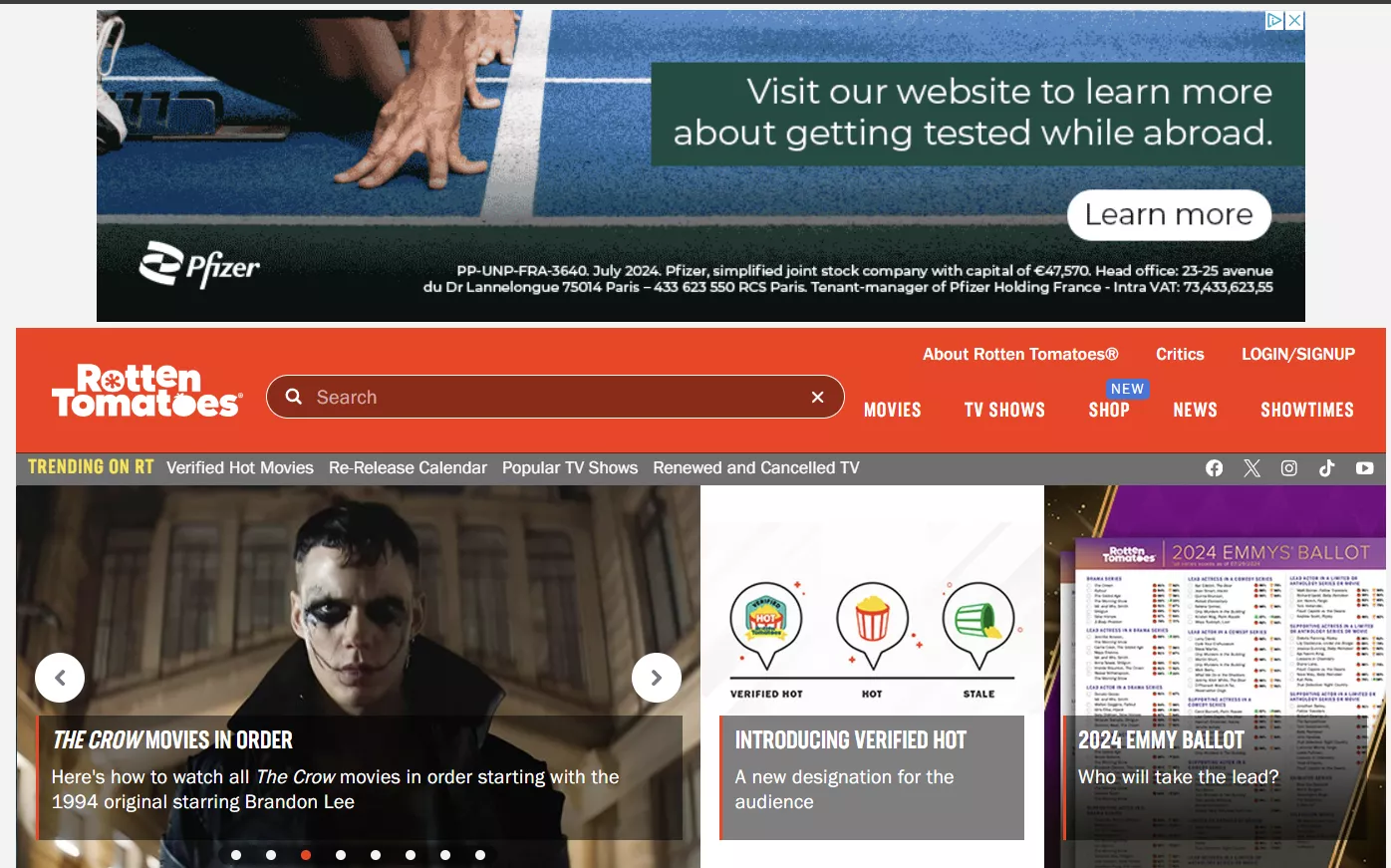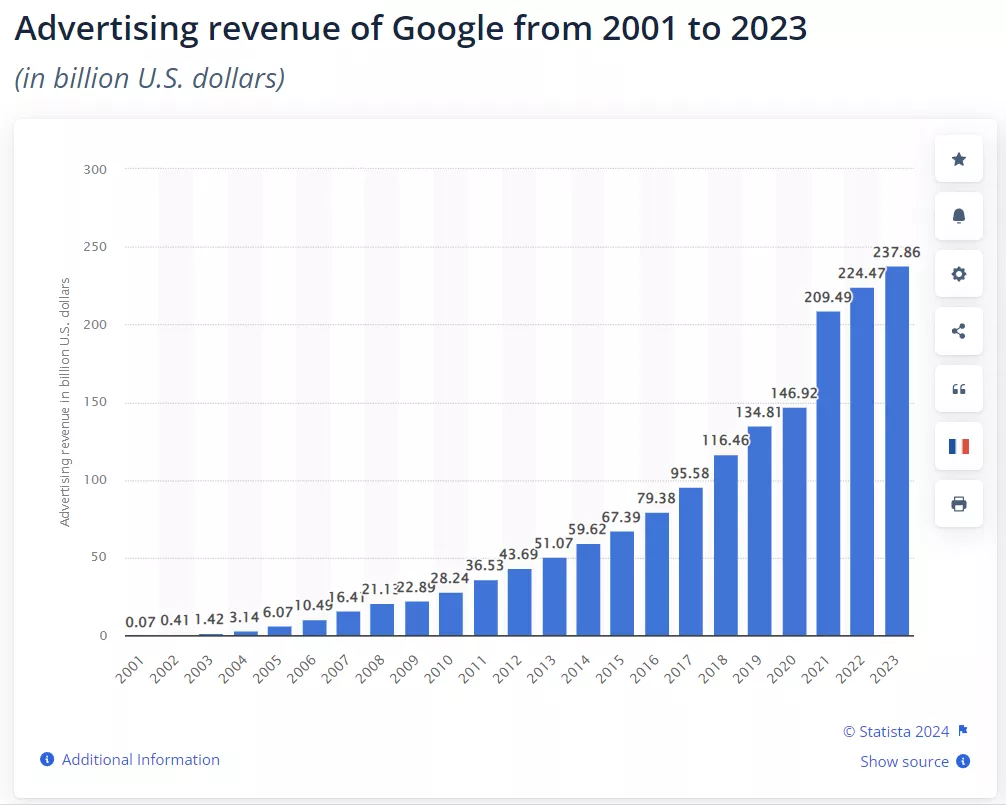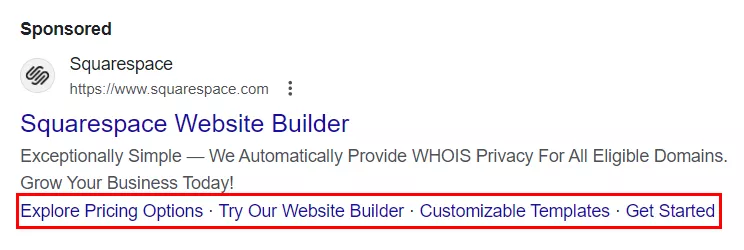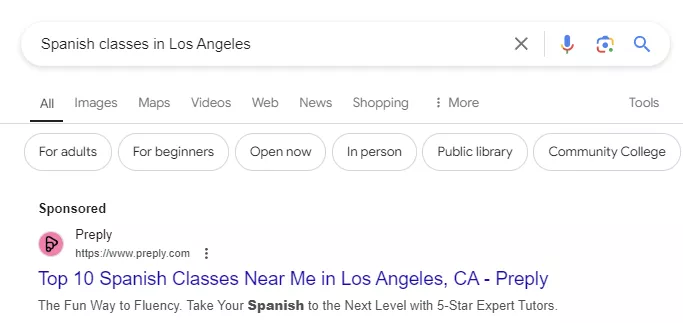All You Need to Know About Contextual Advertising
Contextual advertising is expected to be a $447.9 billion market by 2027. It’s used by global giants like Apple and small businesses alike, but is it right for you? To decide, it is important to understand the nature and principles of this type of advertising.
In this article, we’ll first talk in detail about the most popular tool – Google Ads – and then discuss the other contextual advertising options.
Contents:
- What is contextual advertising? Not everyone knows it, but everyone has seen it.
- Types of contextual advertising
- Contextual advertising platforms and services
- What you need to know about contextual advertising before launch
- Bidding principles for online advertising
- Contextual advertising automation
- Google Performance Max automated campaigns
- What an ad should look like in contextual advertising
- Choosing semantics. Why you need keywords and their relevance
- Advertising campaign analysis and optimization
What is contextual advertising? Not everyone knows it, but everyone has seen it.
Contextual ads are personalized ads that a user sees based on their search queries.
How does it work? Let’s say someone searches for “Spanish classes near me.” In the results, they will see results labeled “Sponsored.” These are contextual ads. Ads for Spanish classes will appear in response to the queries about Spanish classes, but they will not appear for those who type “house rental” into the search. Essentially, this means that only users who are interested in your product or service will learn about it.
There may be up to four ads above the organic search results, and they are also found below the search results.
Contextual ads are also placed on various sites.
Check out our glossary for key online advertising definitions to enhance your marketing knowledge!
Advantages of contextual advertising
- Fast results. You can launch an advertising campaign in a day and get immediate results, including clicks and possibly even sales. Simply put, it is one of the fastest online marketing tools available.
- Flexible ad settings. You can choose the most relevant audience for your product. Keep in mind that contextual advertising works best with ready demand. It will show ads to those who are thinking about buying or have already decided to buy.
- Pay only for results. Contextual advertising works like PPC (pay-per-click). This means the advertiser pays for user clicks, not message impressions.
- Measurability. Clicks on any banner or link can be tracked, so you can easily measure how much you have spent and what results you have achieved.
Disadvantages of contextual advertising
- High levels of competition. If you are a new player in the market, it will be difficult and expensive to get to the top, especially in a highly competitive market.
- Clickjacking is a type of fraud in which someone intentionally clicks on ads. Sometimes, competitors may do this to make others run out of daily budget faster, stop the campaign due to a limit, and no longer appear in the results.
- It’s hard to get it right without a PPC specialist. Yes, almost everything in advertising services is automated these days, but even with automated strategies, you need to have a good understanding of the subject. More on this below.
Types of contextual advertising
Contextual advertising has flooded the web in the form of plain text, animation, video, and banners. It can be classified according to several criteria.
- By the place where the ads are displayed:
- Search contextual advertising are the links in the search results after your query.
- Thematic advertising is displayed on thematic partner sites, such as those included in the Google contextual media network (CMN).
- By form:
- Text
- Video ads, such as small clips embedded in YouTube videos.
- Text graphics, which are a combination of text and visualization. In other words, banner ads.
The second and third types are often referred to as “media,” where the demonstration of a product or service is done with the help of audiovisual content. When such advertising is shown on demand, it is considered both contextual and media.
- Remarketing focuses on the behavior of the target audience. Users who have been on your site will receive follow up messages about products and other resources.
- Shopping Ads. For example, in Google Shopping, the advertising message aims to share information about the product. It is taken from the feed, which is an XML file created on the advertiser’s site to upload data to the search engine through the Merchant Center service.
Shopping Ads can appear at the top of the page or on the right.
Context ads should not be confused with targeted advertising on social media. While the latter also works on the principle of PPC, it is not based on the user’s request but on the analysis of audience data and people’s behavior on the network.
Contextual advertising platforms and services
You can place contextual ads using specialized services. The number one contextual advertising platform is Google Ads, of course, but there are many other ways to promote your business.
Google Ads
Online advertising is a major source of revenue for Google. According to Statista, it has a 39% market share and will generate nearly $238 billion in revenue in 2023.
(src. Statista)
Google Ads allows you to place your ads:
- Across the search network and on Google Maps
- On partner sites that are part of the contextual media network, including YouTube
- On Google Play to promote apps
Read the Netpeak Journal for a complete guide on how Google Ads works, and learn about the ins and outs of your ad account: A Step-by-Step Guide to Creating a Demand Gen Campaign.
Microsoft (Bing) Ads
The Bing search engine may be inferior to Google, but with the right understanding of the target audience, Bing Ads is a promising platform.
It has more than 50 million users and takes up 30% of the North American market and part of the European market. On Bing, we are talking mostly about people over 35 with above average income.
If your company is targeting the Western market, this is a good opportunity. In addition, the interface of the Bing advertising account is not very different from Google’s. There is integration between the two systems, and campaigns can be transferred quite quickly. As an added bonus, the price of a click in Bing Ads is more than twice as low as the same indicator in Google Ads.
Interested? Read our full review of Microsoft (Bing) Ads.
Amazon Ads
Marketplaces have made it quick and easy to start selling abroad. The biggest of them, Amazon, has an internal search system that you can use to promote your goods through both organic and paid channels.
Amazon Ads is great for beginners with zero traffic, as well as experienced sellers looking for new reach. Everything works in a standard way: the user enters the query in the search bar and, among the results, they will see offers with a sponsored sign.
In addition, there is the possibility of retargeting and advertising on other platforms owned by Amazon. For example, Twitch.
Apple Search Ads
As mentioned earlier, Google allows you to promote apps through special campaigns, including on Google Play. The App Store has its own Apple Search Ads tool.
In addition to the standard “a user sees an ad in response to their query” option, there are several other formats. For example, sponsored messages are displayed on the search page before a query is entered or in special tabs.
Case study: This is the tool Comfy used during the Black Friday sale in 2022. It managed to increase the number of installs of its app without increasing its budget.
What we did:
- We enabled brand protection to prevent competitors from advertising on Comfy’s branded queries.
- Then, we increased bids on relevant queries to cover impressions during the peak demand period on the eve of Black Friday.
- We also grouped queries so that key competitors’ brands could be placed in separate groups and bids could be managed more flexibly.
As a result, RadASO specialists increased the number of Comfy app installs by 127% and reduced the cost per install by nearly 41%.
What you need to know about contextual advertising before you launch
Before launching, it is important to decide on a budget. In contextual advertising, you most often pay for each click on a link. Let’s say you can spend 100 hryvnias per day; one click costs 25 hryvnias, and then you have four of them. Is it enough? If you have the only machine shop in the locality, maybe. Therefore, it is important to analyze the niche and the competition.
The price of a click is determined by online bidding.
Online advertising bidding principles
There is a limited number of ad placements in search results and ad blocks on partner sites. Therefore, ads are placed according to the results of the auction.
When we talk about ad placements on Google Ads, we are talking about the time between entering a query and seeing the results. A special algorithm works here: not just one winner is determined, but the position of several participants in the final output.
The position is influenced by the ranking of the ad. It depends on:
- CPC rate, which is the maximum amount a participant is willing to pay for a click.
- The quality of the ad. The key factors are:
- The estimated CTR (click-through rate), including its clickability and the ratio of the number of clicks to the number of ad impressions.
- Relevance, whether it matches the user’s key query.
- The quality and relevance of your landing page.
The system analyzes these metrics as well as others, such as time of day and user behavioral signals (time spent on the site or number of internal transitions), and it determines the final rating. To get a higher rating, it is important to make relevant ads that lead to a quality site.
Next, the CPC (cost per click) is calculated, which is the actual price you pay for a click.
Read more: Pay-Per-Click Advertising Model: What It Is and Why You Need It.
Automating contextual advertising
Contextual advertising bids can be set manually or automated. The trend in recent years has been towards maximum automation. Algorithms are so advanced that you can set the main goal yourself and let bots do the rest.
Automation allows you to optimize costs, but it doesn’t do so immediately. Campaigns based on automated strategies are self-learning, so it takes time for them to work as efficiently as possible.
- In Bing Ads, automatic bids are set at the keyword and product group level. You add an ad campaign or a group of ads to the automated bidding strategy.
- Google Ads offers several automated bidding strategies, each tailored to a specific goal. For example, you might want to get maximum conversions for a given cost, or you might want to keep your ad campaign within a certain profitability metric. An experienced marketer knows how to use such strategies properly and what their growth points are.
- Amazon Ads algorithms allow you to set only a daily budget. Then, the system itself collects keywords specified in the seller’s listing (product card) and starts optimizing campaigns. According to Netpeak Agencies Group’s Amazon promotion specialists, by the third or fourth month, automated advertising campaigns work so effectively that they do not need to be modified.
Google Performance Max automated campaigns
In 2022, Google replaced several types of campaigns with the Performance Max format, which aims to achieve maximum performance. These ad campaigns rely entirely on bid automation and targeting. Their biggest advantage is that they use all of Google’s inventory. What does this mean? Once you create a Performance Max campaign, you can run it across search results, contextual media, Gmail, YouTube, and Google Maps.
Also read:
- Performance Max Campaign Optimization: 10 Steps to Maximize Efficiency
- Complete Guide to Performance Max Assets and Specs
What an ad should look like in contextual advertising
A contextual ad has three components:
- Title
- The advertised site
- Description
Again, the trend is toward automation. For example, in June 2022, classic text ads in Google Ads became responsive ads.
You can add creatives (titles and descriptions), and the system itself shapes it into an ad message in the output that is maximally relevant to the user’s query. This is the principle used in:
To make your ads more clickable, use Google Ads assets (formerly known as extensions). These include titles, descriptions, and other useful information such as a call button, offline address data, and individual site pages. Some of these assets can be automated at the account level, but most require manual customization.
Google recommends choosing extensions based on your goals:
- To attract customers to your office or stores, add addresses.
- To get more calls or messages from customers, add phone numbers.
- To increase conversions, add additional links to specific pages on your site.
Another type of personalization is keyword insertion, where a phrase from the user’s query appears in the text. For example, I might see different ads depending on whether I’m looking for Spanish classes in general or Spanish classes in Los Angeles.
An ad not related to the city
A similar result for those looking for classes in LA
Keyword research: why you need keywords and their relevance
Keywords determine the relevance of your ad to the user’s query. Or the theme of the site if we are talking about thematic advertising. Therefore, choose them carefully so that they are truly and directly relevant to your product.
One way is to use the following services:
They allow you to check the frequency of the query (how often it is entered by users), select similar keywords to expand the list, and find negative keywords. Negative keywords will lead those who are not interested in the service to the website, so they should be removed in advance. For example, if you offer car-sharing services, it is worth excluding keywords about buying a car.
Queries can be divided by “temperature”:
- Hot: signal readiness for a target action, such as “buy” or “price”;
- Warm: express interest in the product but not readiness to buy. For example, “iPhone 15 Pro review”, “Samsung Galaxy S24 features”;
- Cold: general phrases that generate good traffic, but do not bring only those who are looking for your specific product.
When you start an ad campaign, you need to specify one of the three match types:
- Exact match: Ads are shown for queries containing a keyword in a specific word form, and queries containing other words are excluded. The coverage is narrow but relevant.
- Broad match: Ads are shown for all queries related to the keyword, including different word forms, phrases with errors, and in different word orders. This is suitable for achieving broad coverage.
- Phrase match: Ads are shown for combinations of words that include the keyword query. The order of words in the phrase is fixed, and other words may be added before or after it.
Ad campaign analysis and optimization
Let me remind you that contextual advertising results are easy to track. It’s worth taking care of monitoring before you launch your ad campaign. Set goals in Google Analytics and import them into Google Ads.
It’s important to determine what you consider a measure of success and effectiveness. Is it more traffic or more orders? Are visitors more likely to add products to their cart or request more information? Depending on your goal, you can choose a metric to evaluate effectiveness. There are tons of them.
- CPA (cost per action) is the price you pay for a customer’s actions.
How to calculate: divide the total ad spend by the number of targeted actions. - CPO (cost per order) is the price of a specific order. It’s a specific type of CPA that allows you to understand how much orders cost you.
How to calculate: divide the total ad spend by the number of orders. - CR (conversion rate). Determine the target action yourself based on your goals.
How to calculate: users who made a targeted action / total number of people who clicked on the link * 100%. - CTR (click through rate) refers to actual clickability. The best indicator of the effectiveness of a particular text ad, banner, or video ad.
How to calculate: the number of clicks on the ad divided by the number of impressions * 100% - ROMI (return on marketing investment) is an indicator of the profitability of marketing promotion and helps assess the effectiveness of advertising.
How to calculate: (Marketing revenue – Marketing expenses) / Marketing expenses * 100% - ROAS (return on advertising spend) is one of the ways to evaluate the return on investment. It allows you to understand whether your advertising campaign has paid off.
How to calculate: divide the revenue attributed to your ad campaign by the cost of that campaign. - CRR (cost revenue ratio) is a metric that evaluates the effectiveness of contextual advertising.
How to calculate: spending on advertising campaign/income from advertising campaign * 100%.
You can monitor and compile these metrics in Google Analytics. They are automatically imported from Google Ads, and there are also integration options for other services.
What to remember
Contextual advertising is a convenient way to get your product or service in front of people who are interested in it. It can be placed in search engine results and on search engine partner sites, so it is divided into search and topic. These ads appear in response to a user’s query or according to the topic of the page being placed.
There are several advantages to contextual advertising:
- Quick launch and fast results
- Targeting of relevant audiences
- Flexible display settings
- Results tracking
- Pay only for clicks or conversions.
Contextual ads are most commonly placed through Google Ads, but you can also use other options to promote your business.
- Ads are displayed after an auction. The winner is determined based on the bid and other metrics.
- The quality of the ad also plays an important role. When writing the text, you need to pay attention to the selection of relevant keywords and extensions.
- Before launching the ad campaign, you need to set up analytics tools. Understanding what you are aiming to achieve with contextual advertising is important for measuring its effectiveness.
Search engine algorithms and advertising accounts are now sophisticated enough to deliver and optimize quality ads. But to get the most out of it and compete successfully with other businesses, you need a PPC specialist to help you set up and manage contextual advertising.
Related Articles
Display Advertising Effectiveness Analysis: A Comprehensive Approach to Measuring Its Impact
In this article, I will explain why you shouldn’t underestimate display advertising and how to analyze its impact using Google Analytics 4
Generative Engine Optimization: What Businesses Get From Ranking in SearchGPT
Companies that master SearchGPT SEO and generative engine optimization will capture high-intent traffic from users seeking direct, authoritative answers
From Generic to Iconic: 100 Statistics on Amazon Marketing for Fashion Brands
While traditional fashion retailers were still figuring out e-commerce, one company quietly revolutionized how U.S. consumers shop for everything from workout gear to wedding dresses










